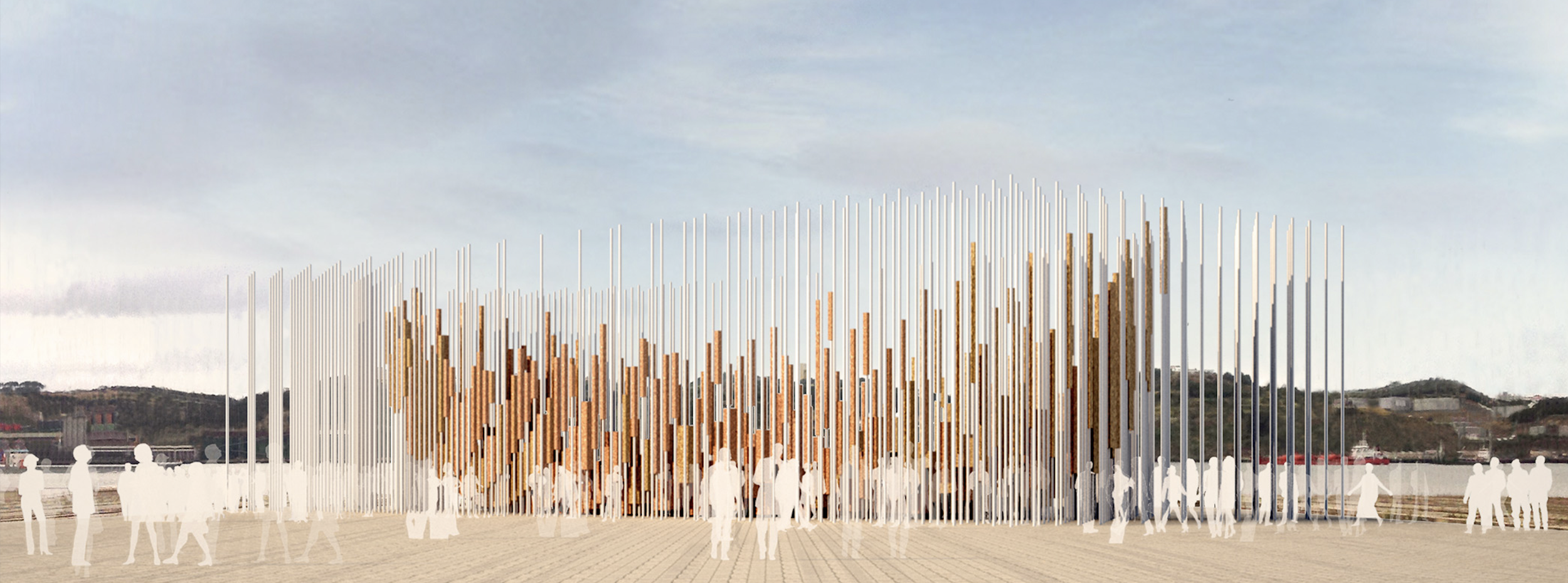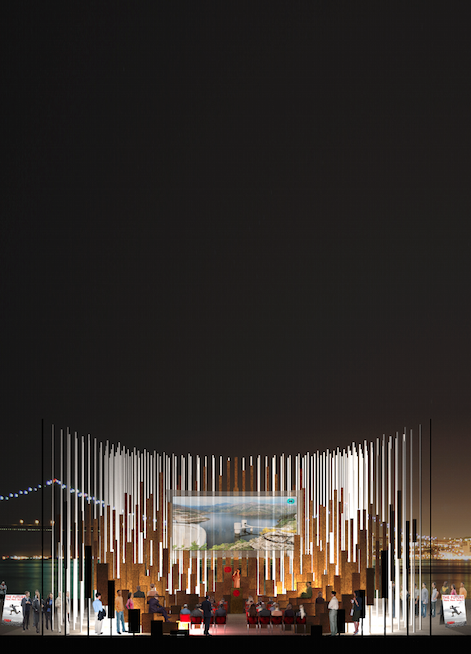
The unknown island
Crossing the edge between science, innovation & technology
This urban installation project was conceived to merge science, innovation, and technology into an immersive public experience. Positioned in a central urban (s)pace, it served as a symbolic and functional vessel for dialogue about our uncertain future. The installation invited people from all walks of life to engage with complex topics through sensorial, intuitive interaction, transforming abstract ideas into tangible experiences.
-
The installation was designed to be inclusive and accessible to a diverse audience:
General public and casual passersby
Students, educators, and families
Researchers, scientists, and technologists
Artists, designers, and policy thinkers
Regardless of background or education, all users could access the content through multisensory experiences, ensuring broad engagement and participation.
-
The project addressed the phenomenon of “future alienation,” a growing disconnect between the rapid pace of global change and the public’s ability to engage with it meaningfully. Climate uncertainty, digital transformation, and scientific advances often feel abstract or inaccessible. This installation sought to make the unknown future present and participatory—an experience grounded in the body and senses;
-
The primary goal was to create a shared public space that:
Encouraged reflection on future-oriented themes
Made complex scientific and technological knowledge accessible
Sparked interdisciplinary dialogue and community engagement
Used architecture as a medium to humanize abstract systems and data
-
Collaborative Research
Initiate a cross-disciplinary research phase involving scientists, architects, and experience designers to define the core themes that will shape the content of the installation. This collaboration aims to ensure scientific accuracy while fostering creative interpretation.Concept Translation
Translate complex scientific and technological ideas into engaging spatial and sensorial experiences. This will include the use of soundscapes, tactile materials, light patterns, and kinetic elements to make abstract concepts physically and emotionally relatable.Inclusive Design Development
Design with accessibility at the forefront. Map diverse user journeys—including those of people with sensory impairments—and develop interactive prototypes to test and refine user experience. The goal is to create an intuitive, inclusive environment open to all.Fabrication & Installation
Construct the installation using sustainable and locally sourced materials. The design will be placed in a high-visibility urban area to maximize public engagement. Embedded technology will allow for real-time interaction and dynamic content updates.Public Engagement Programming
Activate the space through a curated program of workshops, guided visits, and public discussions. These events aim to turn the installation into a living laboratory for dialogue, where innovation, science, and speculative futures are explored collectively. -
Engage a broad and diverse public audience, including individuals from non-academic backgrounds, through an accessible and immersive experience.
Foster inclusive, cross-disciplinary dialogue around pressing and complex themes such as artificial intelligence, climate change, and urban transformation.
Demonstrate how urban public spaces can serve as platforms for science communication, cultural reflection, and collective imagination of the future.
Inspire future collaborations with local authorities, educational institutions, and cultural organizations, with the potential to scale or replicate the installation in other contexts.




